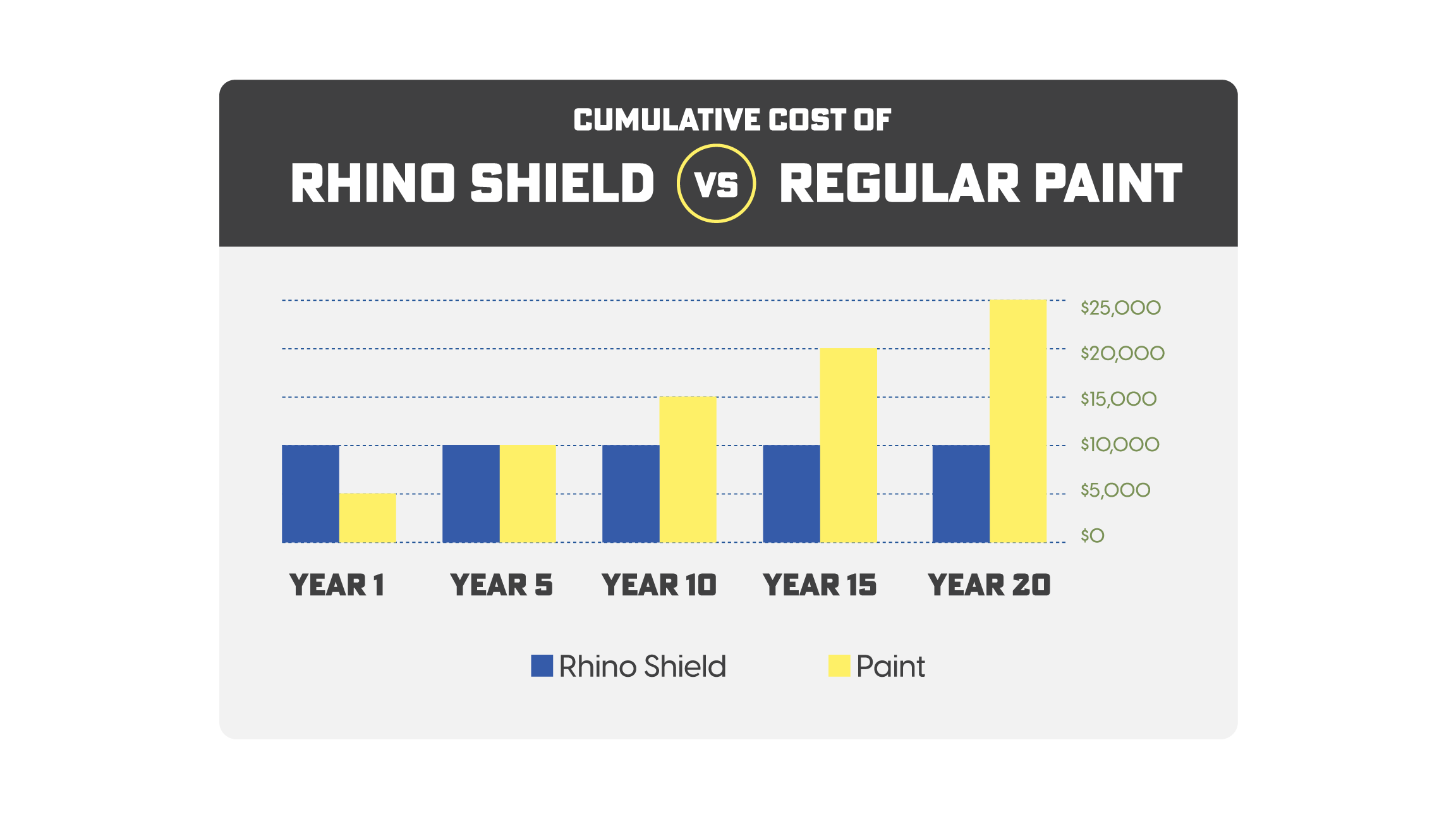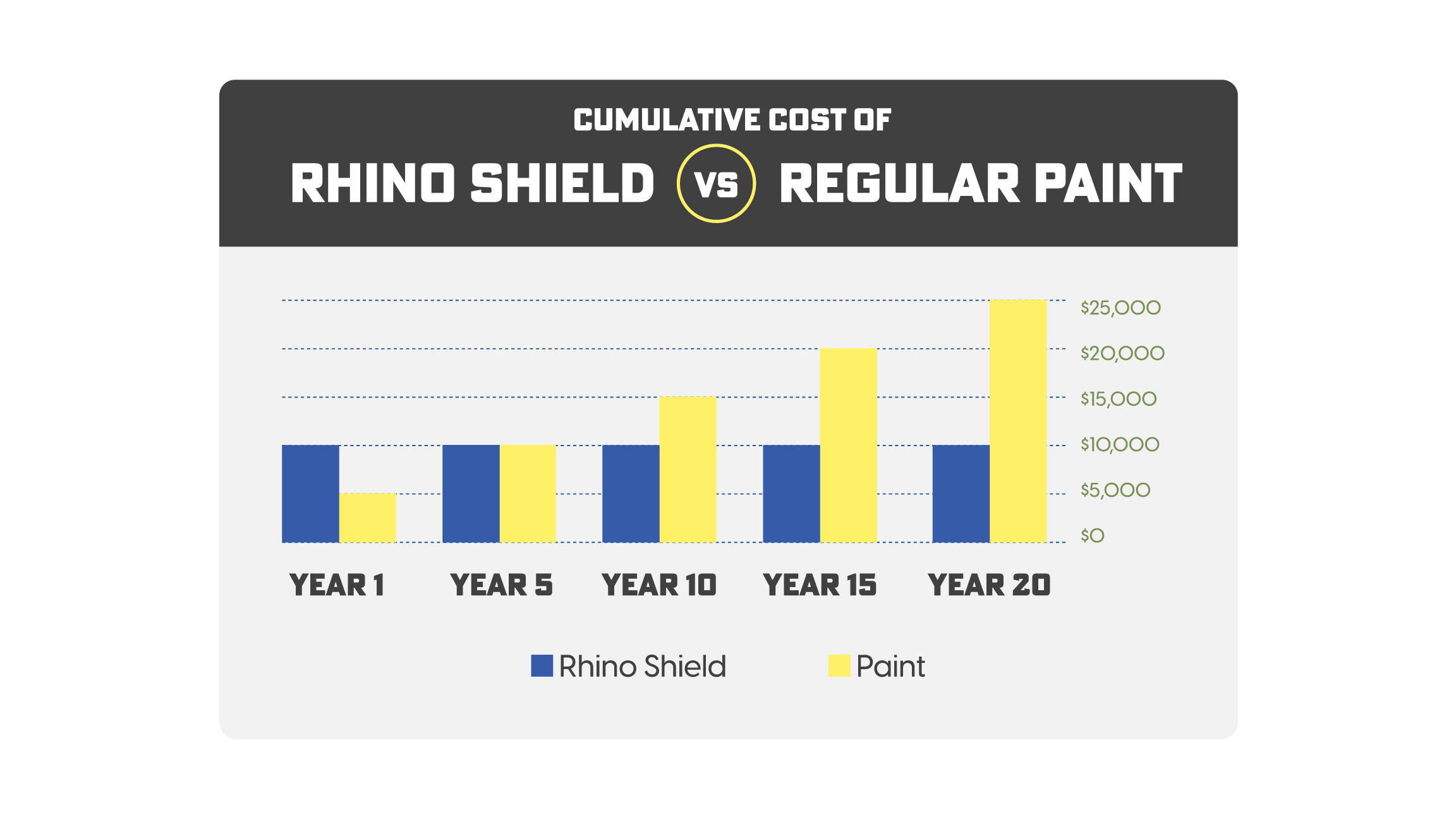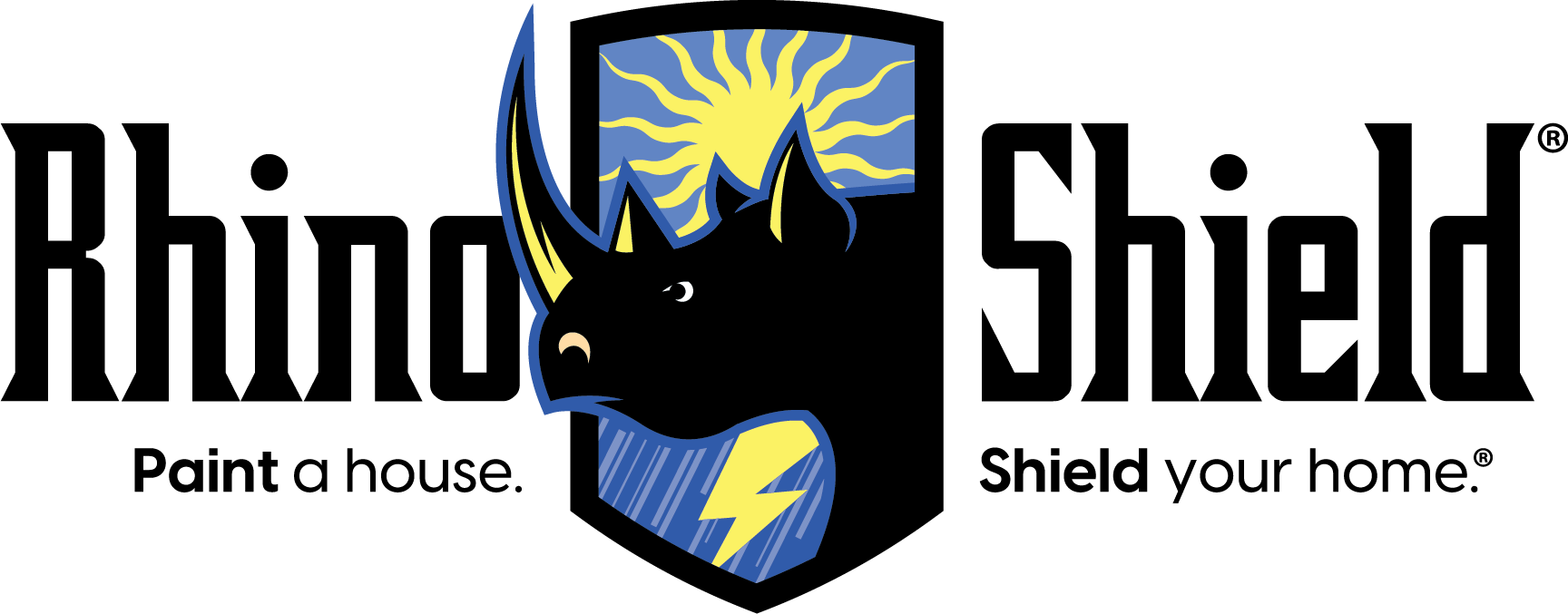What Is the Average Cost of Traditional Exterior Painting for My Home?
January 3rd, 2024 | 5 min. read
By admin

One of the first questions homeowners often ask us is, ‘What’s the average cost to paint a home?’ and ‘What factors increase the price?’ Here at Rhino Shield, we get these questions constantly and are here to provide answers. We have a whole line of ceramic coatings for your home and take pride in our product’s durability, longevity, and comprehensive installer training. We want to be honest, though, about what you can expect from a contractor’s painting process and pricing in general so that you can make the most informed decision and do what’s best for you. We’ll cover:
- The average cost of installing an exterior paint coating
- What factors influence pricing
- Downpayments/deposits
- Financing
- Potential discounts
The Average Cost to Paint Your House
The average cost for an exterior paint job is usually between $2.50 - $6 per square foot. This is for a full-service job including materials, labor, prep etc.
Breaking Down the Cost of a Paint Job
Making sure your home is fully prepared to be painted is vital to achieve a lasting coating. Some homes may take two days to clean, prep, and mask, while others may take as much as two weeks. The longer it takes to complete a project the more it will increase your overall cost.
Preparation and Inspection: Painting any home requires a comprehensive examination and initial groundwork, which involves addressing issues like water damage, cracks, bio-growth accumulation, substrate issues, and moisture levels. The extent of these necessary repairs will impact the price of the project.
Patchwork: Your contractor should fill all nail holes and cracks, ensuring a smooth and flawless surface. Over time, imperfections like patches can develop due to uneven paint absorption or chips on your siding. To account for this, an installer can apply multiple layers of primer to eliminate these blemishes.
Protective Masking: Protective tape is used to mark off areas you wish to keep paint-free, such as windows, light fixtures, and doors.
Foundation Trenching: Despite its impact in protecting the coat, most painting businesses do not do trenching. At Rhino Shield, we excavate a trench about 4 to 6 inches deep around your home's foundation to apply our primer and topcoat at the base. This safeguards against issues like algae, water seepage, fungal growth, and decay below ground level. Moisture infiltrating beneath an exterior paint job is a common source of damage, and trenching prevents this moisture from entering the foundation.
Repair Work: Before painting, it's vital to address any deteriorated or loose siding to ensure a seamless finish. Replacement siding materials might be needed. Additionally, you might need to re-caulk areas and get your window trim replaced.
Surface Scraping and Sanding: A good installer will always take measures to protect your landscaping, such as misting plant leaves and using fabric drop cloths on the lawn to prevent damage from sanding debris. The team working on your home should wear appropriate safety gear, including masks and respirators, during the sanding process.
Pressure Washing: To ensure a ready-to-paint surface, your home’s exterior will be thoroughly pressure washed, removing all dirt and debris.
Caulk Application: Following thorough cleaning and priming, caulk is applied to seal gaps around window frames, door frames, molding, and fascia boards.
Priming: If you plan to change your home's color, a critical step is applying an appropriate layer of primer. This ensures the paint adheres and cures properly to the substrate.
Clean-Up: At the end of each workday, your painting service provider should maintain a tidy workspace by clearing all equipment and materials.
Does the Style of My Home Affect the Painting Price?
The answer is: Yes.
Architectural Style: Elaborate architectural designs demand an elevated level of precision and attention to detail. To tackle intricate details such as trim, gutters, and millwork, installers must make sure they have the appropriate paint types at their disposal. Complex projects will require the involvement of additional workers, meaning the price goes up for you.
Number of Stories: The number of stories in your home plays a crucial role. Homes with more stories often entail challenging-to-reach areas, potentially necessitating specialized equipment like ladders, roof access, or boom lifts.
House age: If your home was constructed prior to 1978, it may contain lead paint. Installers must go through EPA-certified lead paint removal procedures. These include:
- Step 1: Determining if the job involves lead-based paint.
- Step 2: Setting up everything for removal safely.
- Step 3: Wearing protective gear.
- Step 4: Precautions to minimize paint dust.
- Step 5: Meticulously clean the work area.
- Step 6: Control the waste.
- Step 7: Verify work completion with the Cleaning Verification Procedure or receiving clearance.
Does the Type of Siding Affect My Price?
The type of siding you have definitely impacts your exterior painting price. Sidings such as vinyl and cement fiberboard are often your least expensive options, while the more costly alternative is natural wood. Sitting in the mid-range are brick and stucco.
Other Things that Affect Price
Location: The cost of your project can be influenced by your location. If your home is situated in a densely populated urban area with restricted access, project logistics are likely to raise overall costs.
Labor Costs: Costs for labor and materials may fluctuate depending on the cost of living in your region including licensing requirements and insurance costs.
Local Material and Equipment Delivery Costs: Prices for components may be influenced by local market values, and the need for specialized equipment like lifts and scaffolding can also contribute to the total project cost.
Multiple Colors: More colors mean more masking, labor, and material costs.
One or Two Coats: Will a primer be used?
Amount of Trim Work: Trim painting is more expensive due to additional masking and hand labor to paint.
Condition of Current Paint: If a significant amount of previous paint requires removal prior to coating, that will increase the labor cost.
Quality of the Product: The value of a home-exterior coating lies in its longevity and beneficial features. Rhino Shield is a ceramic coating that offers:
- UV resistance
- Water repellence
- Exceptional breathability
- Helps prevent mildewcides, fungicides, and algae.
- Soundproofing
- Abrasion resistance
- Grade-A fire retardant
- An eco-friendly choice
Rhino Shield typically costs $6.50 - $9 per square foot, which is at the high end of the average cost to paint your home. However, most paints don’t have all the advantages listed above and typically only last 5 – 6 years. Rhino Shield is made to last 25+ years. Because of this longevity, you’ll end up saving more in the long run. Learn more about our pricing at Rhino Shield here.

Do I need a Downpayment to Get a Paint Job?
When it comes to securing any installation, it's customary to make a deposit, usually ranging from 10% all the way to 50%. Typically, the higher-end deposits are to cover the material costs. The timing of the downpayment can also change the amount. It may be lower for projects scheduled in the distant future or higher for those with imminent start dates.
Remember, you have the flexibility to negotiate prices with your contractor, so feel free to explore your options.
Can I Finance My Painting Project?
Many painting companies offer financing opportunities. Always ask your local contractor about any potential options.
Bigger jobs will often have opportunities for customer discounts. Seasonal sales are prevalent too.
A Reminder of What We Covered:
- The average cost for an exterior paint job is usually between $2.50 - $6 per square foot.
- Many factors influence cost like the level of preparation work needed, what needs repairs, the type of home, location, etc.
- Contractors will usually require a deposit of 10 – 50%.
- Many painting companies will finance.
Home exterior painting projects have many roadblocks that make them difficult and sometimes dangerous for do-it-yourselfers. This is why we recommend going with a professional installer to ensure a proper application. If you want to learn more about getting Rhino Shield on your home, click below to get a free, no-obligation quote.

